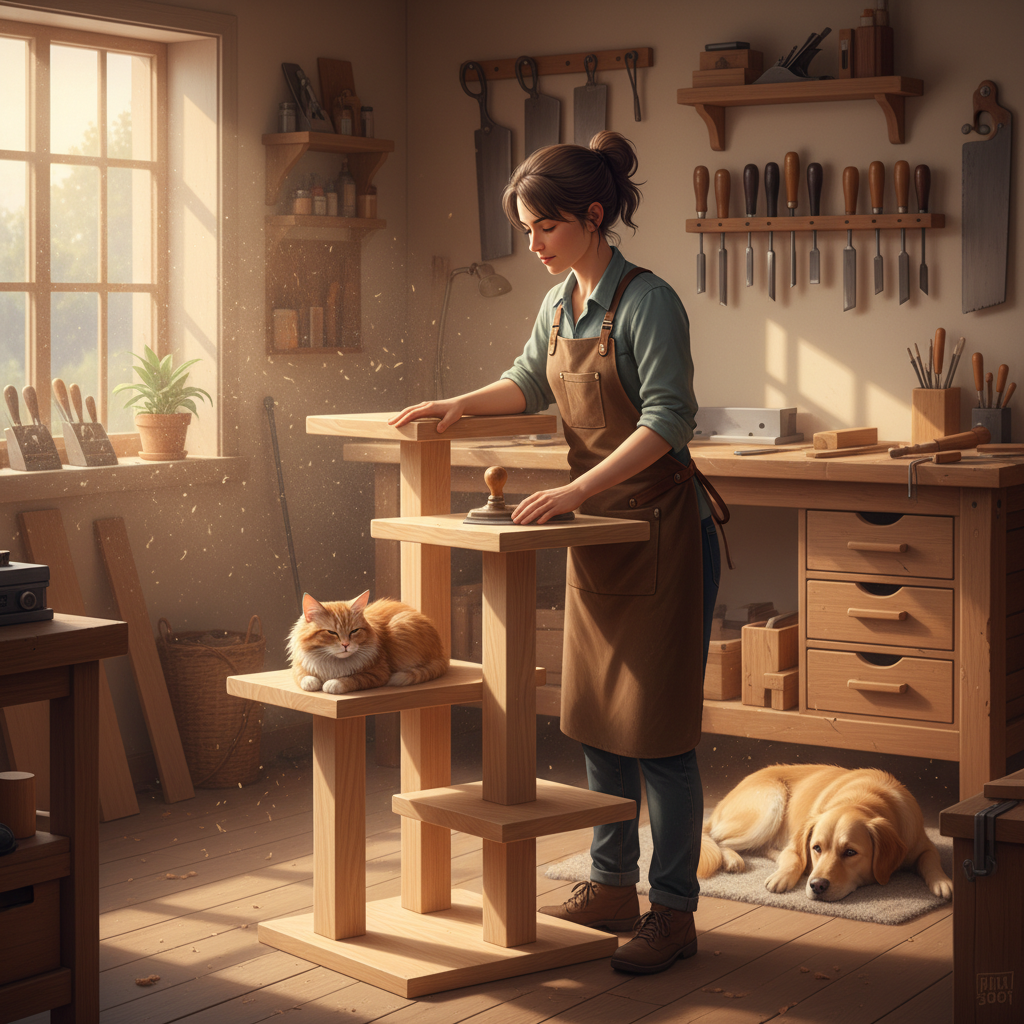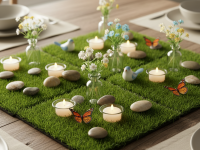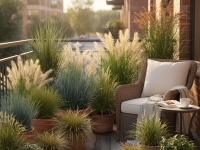The Ultimate Guide to Crafting Custom Wooden Pet Furniture: A Woodworker’s Love Letter to Furry Friends
If you’re anything like me, your pets aren’t just animals; they’re family. They greet you at the door, snuggle on the couch, and somehow always know when you need a little extra love. And just like any family member, we want the very best for them. That often means going above and beyond the standard, mass-produced options available at big box stores.
Today, I want to talk about something truly special: crafting custom wooden furniture for our beloved cats and dogs. As someone who has spent countless hours in the workshop, turning raw lumber into beautiful, functional pieces, I can tell you there’s a unique satisfaction that comes from building something with your own hands specifically for your furry companion. It’s more than just a piece of furniture; it’s a testament to your love, a unique blend of practicality and personal touch that perfectly suits both your pet’s needs and your home’s aesthetic.
Forget the flimsy, unattractive pet beds or the generic scratching posts that clash with your décor. Imagine a sturdy, elegant dog crate that doubles as a stylish end table, or a multi-level cat tree that looks less like an eyesore and more like a work of art. This isn’t just about utility; it’s about integrating your pet’s comfort seamlessly into your living space, enhancing both their life and yours. Let’s dive into the wonderful world of woodworking for our four-legged pals!
Why Go Custom? Beyond the Off-the-Shelf Options
You might be thinking, “Why bother building when I can just buy something?” And that’s a fair question! But once you experience the benefits of custom pet furniture, you’ll understand why it’s a game-changer. Here’s what makes it truly special:
- Perfect Fit, Unmatched Comfort: Ever bought a pet bed that’s too small for your giant breed, or a cat tree that’s too wobbly for your agile climber? Custom furniture is tailored to your pet’s exact size, weight, and habits. A bed can be designed to support an aging dog’s joints, or a cat perch can be placed at the ideal height for their favorite window-watching spot.
- Harmonize with Your Home Decor: No more compromising your interior design! You choose the wood type, the finish, and the style to perfectly match your existing furniture. Imagine a sleek, modern cat shelf or a rustic farmhouse-style dog feeding station.
- Superior Durability and Longevity: Let’s be honest, many store-bought pet items aren’t built to last. Custom wooden pieces, when constructed with quality materials and proper joinery, can withstand years of enthusiastic play, scratching, and napping. This means less waste and a better investment in the long run.
- Pet-Safe Materials: When you build it yourself, you control every element. This means you can ensure that only non-toxic wood, glues, and finishes are used, giving you peace of mind about your pet’s safety.
- The Joy of Creation: There’s immense satisfaction in seeing your vision come to life and knowing you built something beautiful and functional specifically for someone you love – especially if that someone has a wagging tail or a purring motor.
The Woodworker’s Touch: Embracing the Craft
For me, woodworking is a passion. It’s a meditative process of plaing, cutting, shaping, and assembling. When you combine this passion with the love for your pets, the result is truly rewarding. Even if you’re a begier, don’t be intimidated! Many pet furniture projects are quite approachable and can be a fantastic way to learew skills or hone existing ones. The key is starting simple and working your way up.
This journey allows you to tap into your creativity, problem-solve design challenges (like how to make a cat tree stable enough for multiple cats!), and gain a deeper understanding of materials and construction. Plus, showing off your handmade piece and seeing your pet enjoy it? Priceless.
Designing for Your Pet: Where Form Meets Function
Before you even pick up a saw, grab a pencil and paper. The design phase is crucial. Think about your pet’s unique personality and needs:
- Observe Their Habits: Does your dog like to curl up in a tight ball or sprawl out like a starfish? Does your cat prefer high perches or cozy hideaways? Do they scratch furniture? Knowing these things will inform your design.
- Size and Weight: This is fundamental for safety and comfort. A sturdy piece for a Great Dane will require different structural considerations than one for a Chihuahua. For cats, consider their agility and jumping height.
- Functionality: Can your dog crate double as an end table? Can your cat tree incorporate scratching surfaces and storage? Think multi-purpose to maximize space and utility.
- Safety First: Avoid sharp edges, pinch points, and unstable designs. Ensure all openings are appropriately sized for your pet and won’t trap them.
Choosing the Right Wood: Safety and Durability First
This is where your expertise comes into play. Not all wood is created equal, especially when it comes to pets. My top priorities are always safety and durability:
- Non-Toxic Woods: This is paramount. Avoid treated lumber (it contains chemicals). Safe choices include pine, spruce, fir, birch, maple, poplar, oak, and beech. Cedar is also generally safe and aromatic, but some pets might be sensitive to its oils, so use with caution and good ventilation.
- Durability: For items that will see a lot of wear and tear (like dog crates or scratching posts), hardwoods like maple or oak are excellent for their strength. For lighter projects or interior components, softwoods like pine are more affordable and easier to work with.
- Source Responsibly: Whenever possible, opt for sustainably harvested lumber. It’s better for the planet and often ensures higher quality.
Essential Tools and Techniques: Getting Started in the Workshop
You don’t need a professional workshop full of expensive tools to get started. Many projects can be accomplished with basic hand tools:
- Measurement and Marking: Tape measure, ruler, square, pencil. Precision here prevents headaches later!
- Cutting: Hand saw, jigsaw (great for curves), miter saw (for accurate cross-cuts), or circular saw (for straight cuts on sheet goods).
- Joining: Drill and driver (for screws), clamps (essential for holding pieces while glue dries), wood glue, dowel jig (for stronger joints).
- Sanding: Sandpaper (various grits), orbital sander (speeds up the process). Smooth surfaces are key for pet safety and comfort.
- Safety Gear: Eye protection, hearing protection, dust mask, gloves. Never compromise on safety!
Start with simple joinery techniques like butt joints reinforced with screws and glue. As your skills grow, you can explore more advanced techniques like dadoes, rabbets, or even dovetails for beautiful, strong coections.
Bringing Your Vision to Life: A Step-by-Step Approach
Once your design is finalized and your materials are gathered, it’s time to build!
- Measure and Cut: Measure twice, cut once! Accuracy is crucial. Take your time, use a good straight edge, and ensure your cuts are clean.
- Prepare Components: Drill pilot holes for screws, cut any dados or rabbets, and begin initial sanding of individual pieces. It’s often easier to sand flat surfaces before assembly.
- Assemble with Care: Dry-fit components first to ensure everything lines up. Apply wood glue sparingly but consistently, and use clamps to hold pieces tightly while screws are driven or glue dries.
- Final Sanding: Once assembled, do a thorough final sanding. Pay special attention to edges and corners, rounding them over to prevent splinters or injury to your pet.
- Clean Up: Remove all sawdust before applying any finish.
Finishing Touches: Safe and Stylish
The finish not only protects the wood but also adds to the aesthetic. Most importantly, it *must* be pet-safe. I recommend:
- Water-Based Polyurethane: These are durable, low-VOC (volatile organic compounds), and generally considered safe once fully cured. They come in various sheens from matte to glossy.
- Natural Oils: Tung oil or linseed oil (make sure it’s 100% pure, not “boiled” linseed oil with metallic dryers) are good natural options. They penetrate the wood, enhancing its natural beauty. Ensure they are fully cured and no longer emit any odor before your pet uses the furniture.
- Beeswax or Carnauba Wax: These can provide a lovely, natural finish, especially for less high-traffic items.
- Paint: If you choose paint, look for low-VOC or zero-VOC, non-toxic options, and ensure it’s fully cured.
Always allow ample time for any finish to cure completely and off-gas before letting your pet use the furniture. A good rule of thumb is to wait a week or two longer than the manufacturer’s suggested cure time, and keep it in a well-ventilated area.
Beyond Beds: Creative Project Ideas to Spark Your Imagination
The possibilities are endless! Here are a few ideas to get your creative juices flowing:
- Luxury Dog Crates/Keels: Design a crate that looks like a beautiful piece of furniture – an end table, a console, or even a TV stand.
- Elevated Feeding Stations: Great for larger breeds or older pets, these can improve digestion and reduce neck strain. Add storage for food and bowls!
- Designer Cat Trees and Shelves: Create a vertical playground that blends into your decor. Incorporate scratching surfaces, cozy perches, and hidden cubbies.
- Pet Ramps/Steps: Perfect for older or smaller pets to safely access beds or couches.
- Custom Pet Gates: Build a sturdy, stylish gate that matches your home’s trim.
- Toy Boxes: A simple, charming box to keep all those toys organized.
Conclusion: Build with Love, Live with Joy
Crafting custom wooden pet furniture is more than just a hobby; it’s an act of love. It’s an opportunity to provide your furry family members with comfort, safety, and a sense of belonging, all while enhancing the beauty and functionality of your home. The pride you’ll feel when you see your dog comfortably curled up in a bed you built, or your cat happily batting at a toy from a perch you installed, is truly unparalleled.
So, whether you’re a seasoned woodworker or just starting out, I encourage you to pick up those tools and embark on this rewarding journey. Your pets will thank you with purrs, wagging tails, and endless affection. Happy building!



